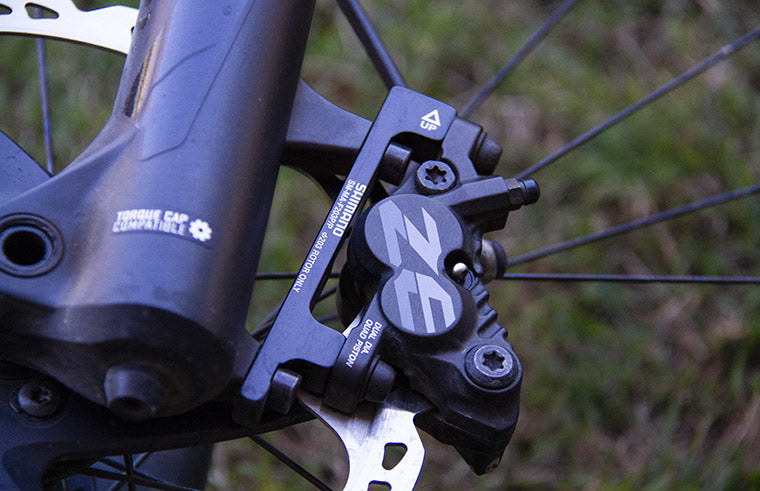I have just installed a Bafang BBS01b 250w motor and 20Ah battery to my 2007 Kona road tourer, and it now weighs 22kg (~48lbs).
The extra weight and the poor condition of the old original mechanical Avid BB7 Road brakes, made me decide to buy new BB7
Road S callipers and uprate the front rotor from 160mm to 180mm.
The new calliper and larger diameter front disc is most confidence inspiring.
But, the new 160mm rear seems woeful now in comparison, so another 180mm rotor and bracket on the way.
Brackets are labelled for the additional
front rotor diameter they add, compared to the standard minimum (+0mm or directly mounting) for that frame or fork, e.g. +20mm, +40mm, etc.
Calliper mounting brackets can be used front or rear, but the bracket will allow 20mm less rotor diameter on the rear than stated.
The arrow or triangle on a bracket indicates the bracket is installed with the arrow pointing upwards.
My Kona has IS (
International Standard) mounts front and rear, but the BB7 is a Post mount calliper.
So they need IS to Post adapter brackets.
The old IS mount adapter brackets for two 160mm rotors were +0mm F, and +20mm R.
The new IS mount adapter brackets for two 180mm rotors are +20mm F and +40mm R.
One advantage of same size discs front and rear is that if you suffer a damaged rotor when out on the trail/road, with the right multi-tool, you can get home with at least a working front brake (i.e. the one that does the most of the work).
This article may help clarify the matter.
Note the CPS washer sets used on some mountings.
They help when the mating surfaces of the mount plate and bolt head are not parallel.
They can also help with setting the calliper parallel to the rotor.
Choose the right brake mount for your bike. Learn how to identify which type and size of brake mount you have and which adaptor you'll need to switch up your rotor size.

www.mtbdirect.com.au












